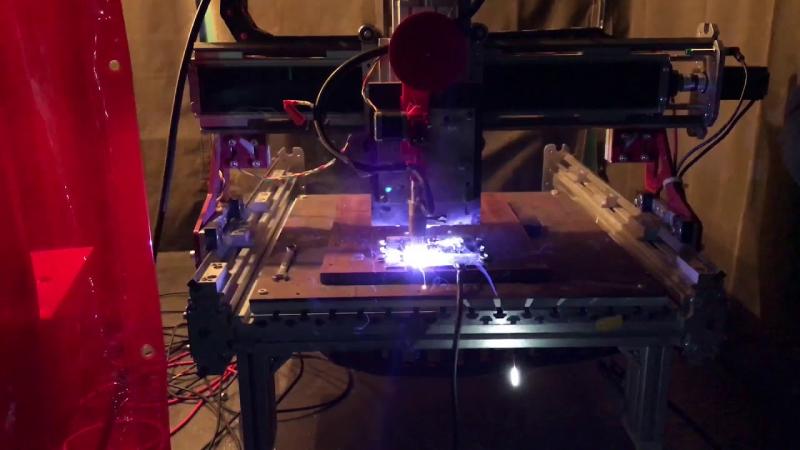Materials For Energy
This research area focuses on the role of materials in the advancement of new and
existing energy sources.
Energy is an area where materials technology plays a particularly important role in
meeting the needs of the future. Environmental issues related to energy generation,
conservation, and storage will continue to drive the role of materials in energy technology.
The high priority of energy makes it important to sustain research, development and
modeling of materials for energy applications.
Lithium ion batteries, ceramic battery materials; Surface and interface dynamics; Thin films and nanostructures; Thermodynamics; Magnetic materials; Diffusional instabilities and applications of electron microscopy
Nanomaterials (such as 3D graphene) for energy and environment; Superstructure materials for energy; Energy devices (solar cells, fuel cells, batteries, and supercapacitors); Heterogeneous catalysis; Thermo-photocatalysis; Photocatalysis; Electrocatalysis; Synthesis of novel solid materials and liquid fuels from CO2; Conversion of natural gas; Hydrogen production and storage; Conversion and utilization of biomass; Microplastics; Conversion and utilization of waste plastics
Auger electron spectroscopy/microscopy; Corrosion and environmental effects; Fracture and failure of materials; Interfacial segregation and fracture; Intermetallic compounds; Materials joining; Process and synthesis of alloys
Auger electron spectroscopy/microscopy; Corrosion and environmental effects; Fracture and failure of materials; Interfacial segregation and fracture; Intermetallic compounds; Materials joining; Process and synthesis of alloys
Innovations in Materials Processing
Industrial materials result from a complex series of processing steps that transform
natural resources into finished parts or products.
This area of materials science and engineering, known at Materials Processing, can
range from refining of the raw materials, to forming the final engineering component
into a desired shape, while at the same time achieving the required properties for
a given application. Research in this area focuses on the development of new processing
techniques or optimization of traditional operations, with the goal of improving materials
performance and reliability, while minimizing cost and reducing energy consumption.
Biodegradable metals; Temporary medical implants; Wetting of solids and liquids; Characterization and modification of materials’ surfaces
Mechanical behavior of materials; Strengthening mechanisms; Deformation processing and design for manufacturing; Steels; Shape memory alloys; Deformation induced phase transformations; Diffraction
Nanomaterials (such as 3D graphene) for energy and environment; Superstructure materials for energy; Energy devices (solar cells, fuel cells, batteries, and supercapacitors); Heterogeneous catalysis; Thermo-photocatalysis; Photocatalysis; Electrocatalysis; Synthesis of novel solid materials and liquid fuels from CO2; Conversion of natural gas; Hydrogen production and storage; Conversion and utilization of biomass; Microplastics; Conversion and utilization of waste plastics
Materials Processing; Microwave; Hydrogen Storage Material; Energy; Recycling; Extractive Metallurgy; Environmental Engineering
Microstructural mapping in laser additive manufactured titanium; Modeling and characterization of Nextel® reinforced aluminum metal matrix composites; Reactive synthesis processes; Thermomechanical processing; Co-deformation of multiphase alloys; Mechanisms of strengthening
Alloy design in Al, Cu, Fe, Ni, and MPEAs ; Apply ICME and statistical tools with machine learning and DOEs in alloy optimization; Verify via production through casting, wrought processing (extrusion, rolling, drawing, swaging), and/or (wire) additive manufacturing; Applications in sustainability (recycling), transportation (lightweighting), and efficiency (thermal stability)
Thermodynamics and phase diagram modeling; Diffusion and solid-state reaction kinetics, and the application of these principles to the solution of materials problems
Development of Functional Materials
There is an emerging class of materials having physical and chemical properties which
are sensitive to changes in the environment such as temperature, pressure, electric
field, magnetic field, optical wavelength, and the pH value.
We call these Functional Materials and they are distinctly different from structural
materials. This research focuses on the development of new functional materials for
application in the areas of information science, communication, microelectronics,
medical treatment, life science, energy, and transportation, safety engineering and
military technologies.
Lithium ion batteries, ceramic battery materials; Surface and interface dynamics; Thin films and nanostructures; Thermodynamics; Magnetic materials; Diffusional instabilities and applications of electron microscopy
Integrated Computational Materials Engineering
A key component to materials education and research is understanding how processes
produce material structures, how these structures give rise to material properties,
and consequently, how best to select a material for a given application.
This research area focuses on how to design materials, and ultimately products, using
fundamental and empirical models at multiple length scales that allow engineers to
choose the optimal materials and the associated materials processing methods.
Lithium ion batteries, ceramic battery materials; Surface and interface dynamics; Thin films and nanostructures; Thermodynamics; Magnetic materials; Diffusional instabilities and applications of electron microscopy
Nanomaterials (such as 3D graphene) for energy and environment; Superstructure materials for energy; Energy devices (solar cells, fuel cells, batteries, and supercapacitors); Heterogeneous catalysis; Thermo-photocatalysis; Photocatalysis; Electrocatalysis; Synthesis of novel solid materials and liquid fuels from CO2; Conversion of natural gas; Hydrogen production and storage; Conversion and utilization of biomass; Microplastics; Conversion and utilization of waste plastics
Microstructure Evolution in Crystalline Solids; Solid State Phase Transformations; Magnetic Domains; Single Crystal Diffraction and Diffuse Scattering; Computational Materials Science
Microstructural mapping in laser additive manufactured titanium; Modeling and characterization of Nextel® reinforced aluminum metal matrix composites; Reactive synthesis processes; Thermomechanical processing; Co-deformation of multiphase alloys; Mechanisms of strengthening
Thermodynamics and phase diagram modeling; Diffusion and solid-state reaction kinetics, and the application of these principles to the solution of materials problems
Alloy design in Al, Cu, Fe, Ni, and MPEAs ; Apply ICME and statistical tools with machine learning and DOEs in alloy optimization; Verify via production through casting, wrought processing (extrusion, rolling, drawing, swaging), and/or (wire) additive manufacturing; Applications in sustainability (recycling), transportation (lightweighting), and efficiency (thermal stability)
Phase Transforming Materials for Advanced Properties; In-Situ Synchrotron X-Ray Diffraction and Neutron Scattering of Single Crystals, Diffuse Scattering of Nanodomains; Dielectric, Ferroelectric, Magnetoelectric Materials and Composites; Colloidal Self-Assembly in Multi-Liquid-Phase Systems; Modeling and Simulation of Microstructures and Properties
